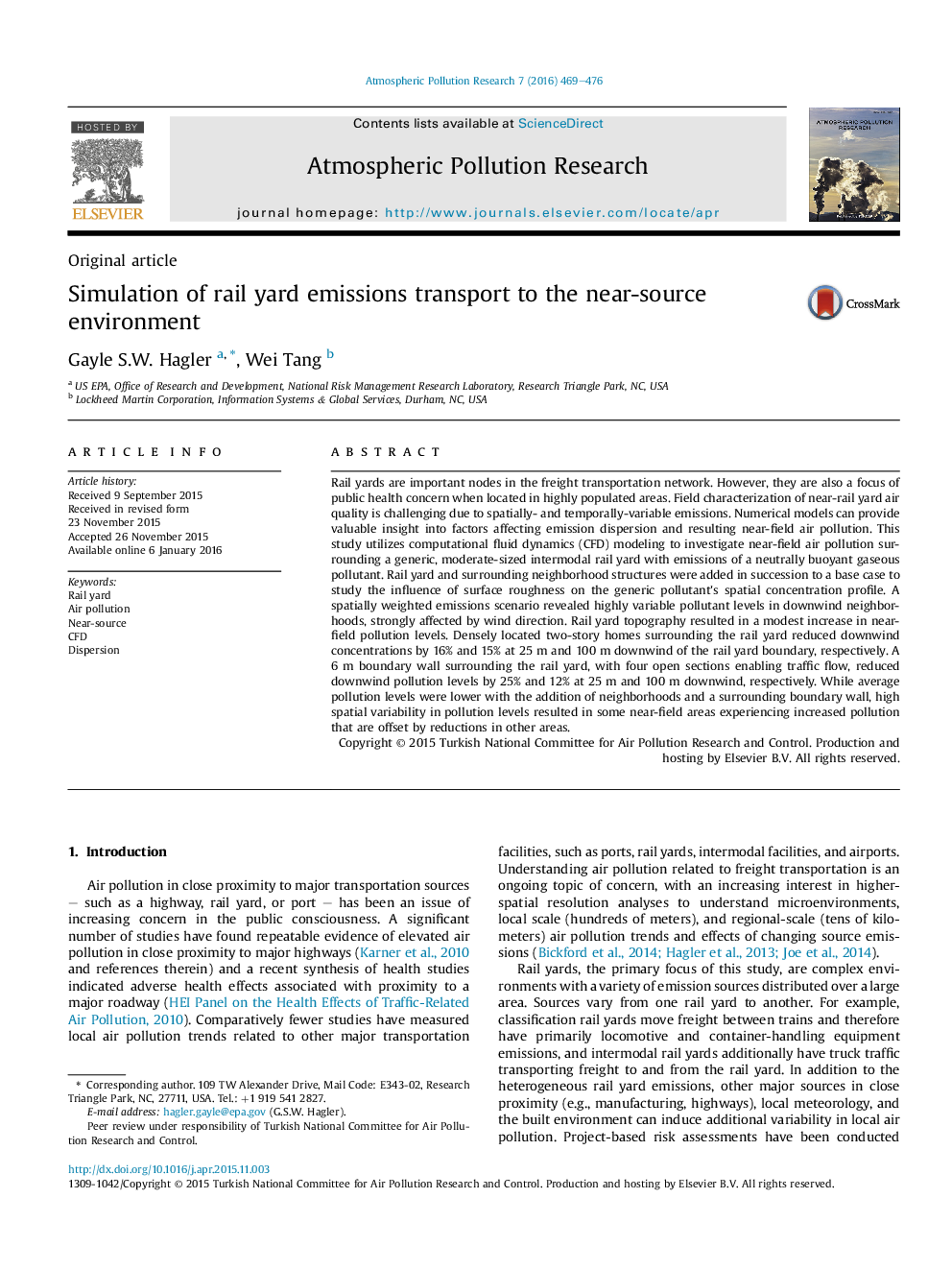| Article ID | Journal | Published Year | Pages | File Type |
|---|---|---|---|---|
| 4434526 | Atmospheric Pollution Research | 2016 | 8 Pages |
•Rail yard emissions transport to nearby residential areas was simulated via a series of 3-dimensional models•Five scenarios incrementally added terrain features; other parameters included emissions weighting and wind direction.•Addition of within-rail yard structures, including containers and buildings, had a minor effect on near-field pollution.•A boundary wall and/or neighborhood buildings outside the rail yard resulted in lower but highly variable concentrations.
Rail yards are important nodes in the freight transportation network. However, they are also a focus of public health concern when located in highly populated areas. Field characterization of near-rail yard air quality is challenging due to spatially- and temporally-variable emissions. Numerical models can provide valuable insight into factors affecting emission dispersion and resulting near-field air pollution. This study utilizes computational fluid dynamics (CFD) modeling to investigate near-field air pollution surrounding a generic, moderate-sized intermodal rail yard with emissions of a neutrally buoyant gaseous pollutant. Rail yard and surrounding neighborhood structures were added in succession to a base case to study the influence of surface roughness on the generic pollutant's spatial concentration profile. A spatially weighted emissions scenario revealed highly variable pollutant levels in downwind neighborhoods, strongly affected by wind direction. Rail yard topography resulted in a modest increase in near-field pollution levels. Densely located two-story homes surrounding the rail yard reduced downwind concentrations by 16% and 15% at 25 m and 100 m downwind of the rail yard boundary, respectively. A 6 m boundary wall surrounding the rail yard, with four open sections enabling traffic flow, reduced downwind pollution levels by 25% and 12% at 25 m and 100 m downwind, respectively. While average pollution levels were lower with the addition of neighborhoods and a surrounding boundary wall, high spatial variability in pollution levels resulted in some near-field areas experiencing increased pollution that are offset by reductions in other areas.
